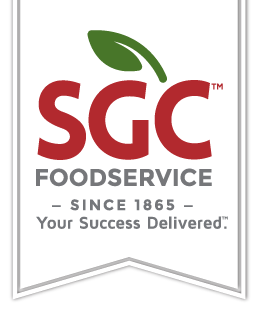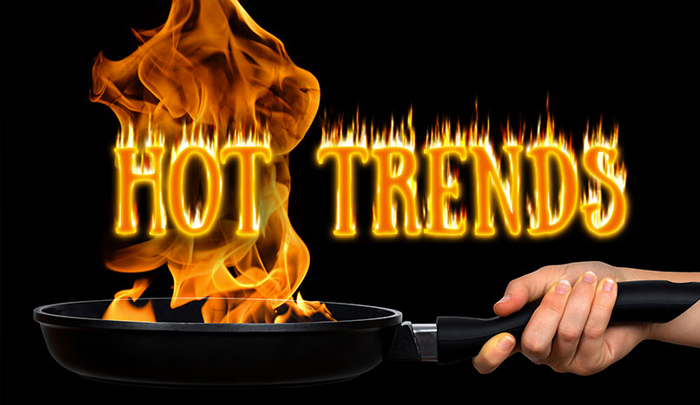The hospitality industry has probably borne the worst of COVID-19. The fallout from the pandemic caught restaurants unaware, but those who embraced technology-based solutions have been able to pivot and embrace new lines of business. Advanced technology trends have made it possible for restaurants to adapt their services to the changing world conditions and not only survive but thrive in this "new normal." In 2021, these same trends and some new ones will continue shaping the restaurant and quick-service industry.
Delivery and pick up technology
As online ordering and delivery increases into 2021, we will see a growth in improved delivery technology. Shelter-in-place guidelines have led third-party delivery services such as GrubHub and UberEats to seek more innovative and health-conscious technology for contactless delivery and pickup. Uber has already tested its drone-based food delivery system, and we can expect the trend to become more popular in 2021 and beyond. GM is also looking into self-driving cars for food delivery. Autonomous delivery vehicles such as drones and motorized carts will greatly reduce delivery costs and make delivery much safer and more convenient for the customer. They also help to cut delivery times to just a few minutes, so drones and other types of automated delivery technology will continue to experience heightened interest. A lot of restaurants also have a contactless pickup model where customers can order online and then pick up the food through drive-thrus and walk-in spaces.
Digital bookings and menus
Contactless delivery and pickup are powered by digital booking and menu selection technology that has seen a lot of advanced improvements in 2020. These improvements include integrations into existing POS systems for fast checkout. Integrated ordering and delivery systems are also available that enable both restaurateurs and customers to enjoy a seamless ordering, payment, and delivery experience. A lot of effort will be geared towards convenience and speed. Statistics show that 92% of restaurant traffic is off-premise, 23% is order-ahead, 21% delivery, and 18% to-go. With smart scheduling and booking technology, customers will be able to enjoy a safe, convenient, and fast ordering experience while maintaining social distancing. At the same time, teams in the kitchen are able to monitor orders using automated kitchen operations technology and get the food ready just in time for customers, ensuring an efficient system all-round.
Touchless payments
For a time, contactless and digital payment options had plateaued because consumers were afraid of the safety of their funds. Today, a different kind of safety has influenced a massive uptick in the use of contactless payment options such as Apple Pay. Also called touchless payment, touchless payment systems are usually powered by radio technology such as NFC. This allows customers to simply tap their cards or wave their phones to pay for food in restaurants. The trend has already gained popularity; Mastercard reports that more than half of Americans today use contactless payments. Due to its safety and convenience, this system means will likely carry over into 2021 and beyond. The use of digital payments also gives restaurant management a better way to run loyalty and customer experience management. Technology such as facial recognition is already in use in high-end hotels that allows staff to identify customers by name, making the whole experience much smoother and welcoming.
Line busting
When COVID-19 is gone and on-premise dining resumes, queues will be a familiar problem for restaurants. Line-busting technology, as part of Quick-Service technology, will likely benefit from mainstream adoption. For restaurants, it will be a small leap after having already adopted contactless payment, delivery software, and other major systems. With the right POS and mobile technology, line-busting tech allows staff to take customer's orders before they reach the counter so that they can be processed much more quickly. Line-busting also lets the customers pay much more efficiently by integrating payment processing technology, which shaves minutes off waiting times for each customer and makes the whole process much more efficient. It's the same thing happening with online ordering, only done in-store and more efficiently.
Automated inventory tracking
Delivery and tracking technology has recognized not just the customer-facing side, but the kitchen and store operations as well. Given that as much as 40% of inventory is wasted from spoilage and poor planning, managers will be extra keen to save money and make inventory tracking more efficient. Inventory management is one of the biggest headaches managers face, but the development of automated inventory management and supply tracking solutions will make it much easier. The software works by maintaining a constant check on stock and tracking usage so that it can notify staff when a particular item is running low. It also allows them to create purchase orders for suppliers at the touch of a button and get supplies on the way in no time. Logistics and tracking solutions additionally make it possible for managers to track the delivery of these supplies, which makes planning much easier. Different platforms also add more capabilities such as financial reporting, integrated vendor management, and multiple location management for restaurant chains.
Smart sensors for safety & planning
Restaurants face a lot of wastage and spoilage every day due to inefficiencies. US restaurants waste about 22-33 billion pounds of food waste each year, amounting to $162 billion. Technology is countering this problem through the use of smart sensors that can track food temperature in cold rooms to ensure freshness and quality. These sensors alert management staff when a problem is about to arise so that they can react quickly to prevent spoilage. Just like that, food safety for customers and waste reduction for restaurants can be achieved with minimal investment. Now that the pandemic demands much more efficient use of restaurant resources, this technology is expected to become more common in 2021.
Mobile/iPad based training
After the shakeup caused by COVID-19, restaurants will change a lot of things when they reopen. From menu changes offering value-added Limited Time Offers (LTOs) to complete business model changes, there will be a burning need for fast roll-out of new procedures, policies, and training for staff. The traditional paper-based systems will no longer cut it in the new world, especially after COVID-19 has already forced many restaurants to innovate fast or die. A digital transformation will also be needed in restaurant data and knowledge management systems. Using mobile and iPad-based training, for example, trainers will keep their staff up-to-date without requiring as many physical visits or training sessions. The flexibility of these systems will also make it easier to handle information dissemination, new staff onboarding, and customer service.
Source: playerlync.com

